Setting up your art studio can be an exciting journey, especially when you’re just starting out.
The right upgrades can enhance your creative space, making it more functional and inspiring to work in.
Investing in essential art studio upgrades can transform your experience and help you unleash your full artistic potential.
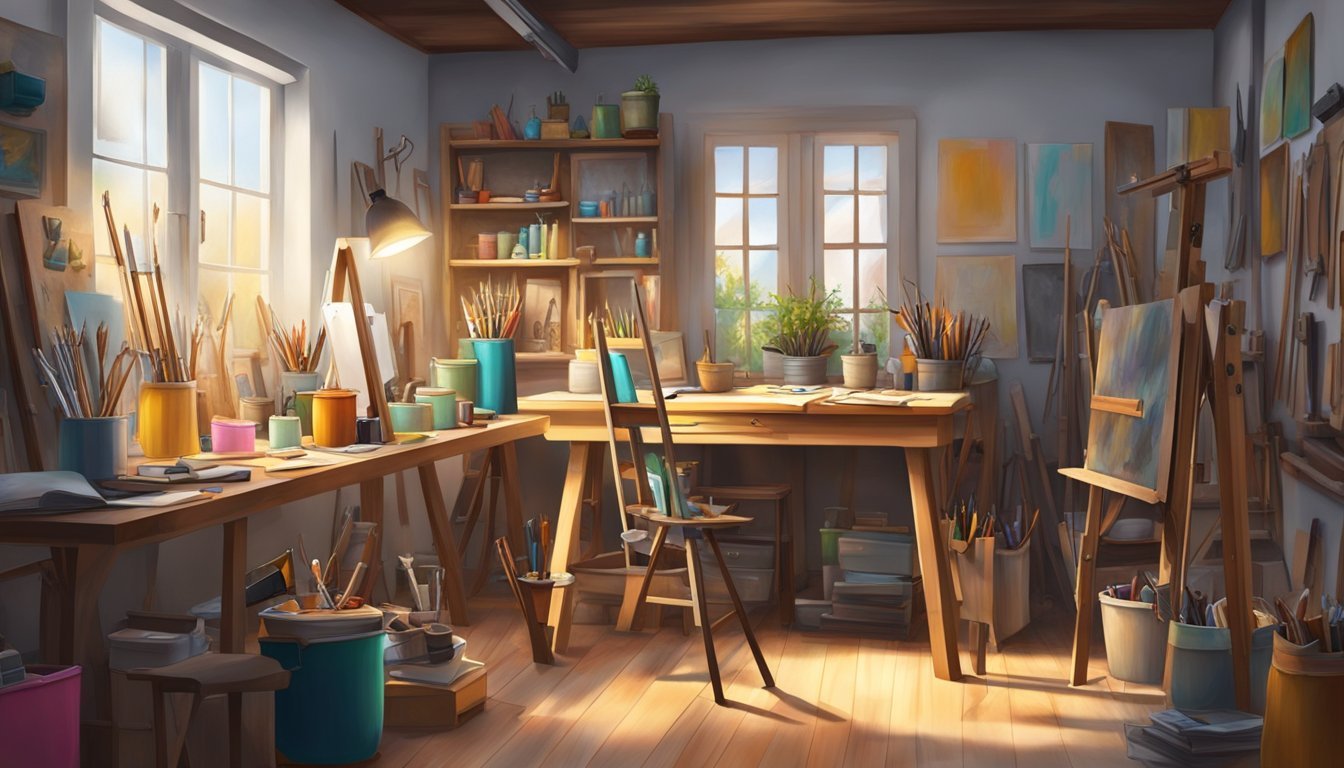
As a beginner, you might feel overwhelmed by the number of options available, from storage solutions to lighting.
Focusing on a few key upgrades can greatly improve your workflow and keep you organized.
Making smart choices for your studio not only enhances your productivity but also gives you a space that reflects your creativity.
Easel with Storage by Mont Marte
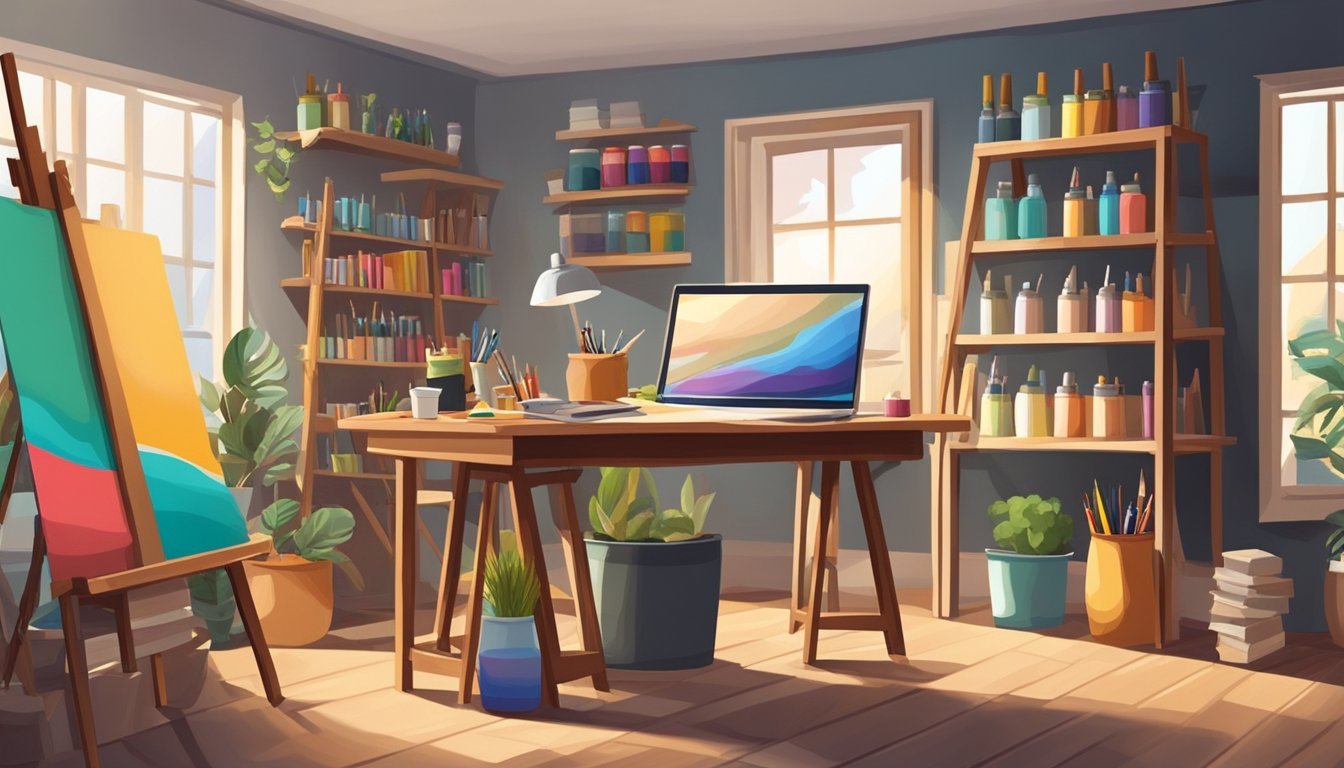
If you’re looking to streamline your painting space, a Mont Marte easel with storage is a great choice.
It offers an efficient way to keep your supplies organized and accessible while you create.
Many Mont Marte easels come with built-in storage solutions, such as shelves or drawers.
This feature allows you to keep brushes, paints, and other tools close at hand, minimizing clutter as you work.
The design usually combines function with style, making it a nice addition to your studio.
You can find easels that adjust to different heights, so they can accommodate various canvas sizes.
With a Mont Marte easel, you not only get a sturdy support for your artwork but also a practical storage solution.
It’s perfect for beginners who want to maximize their workspace without compromising on quality or aesthetics.
2) Prismacolor Premier Colored Pencils
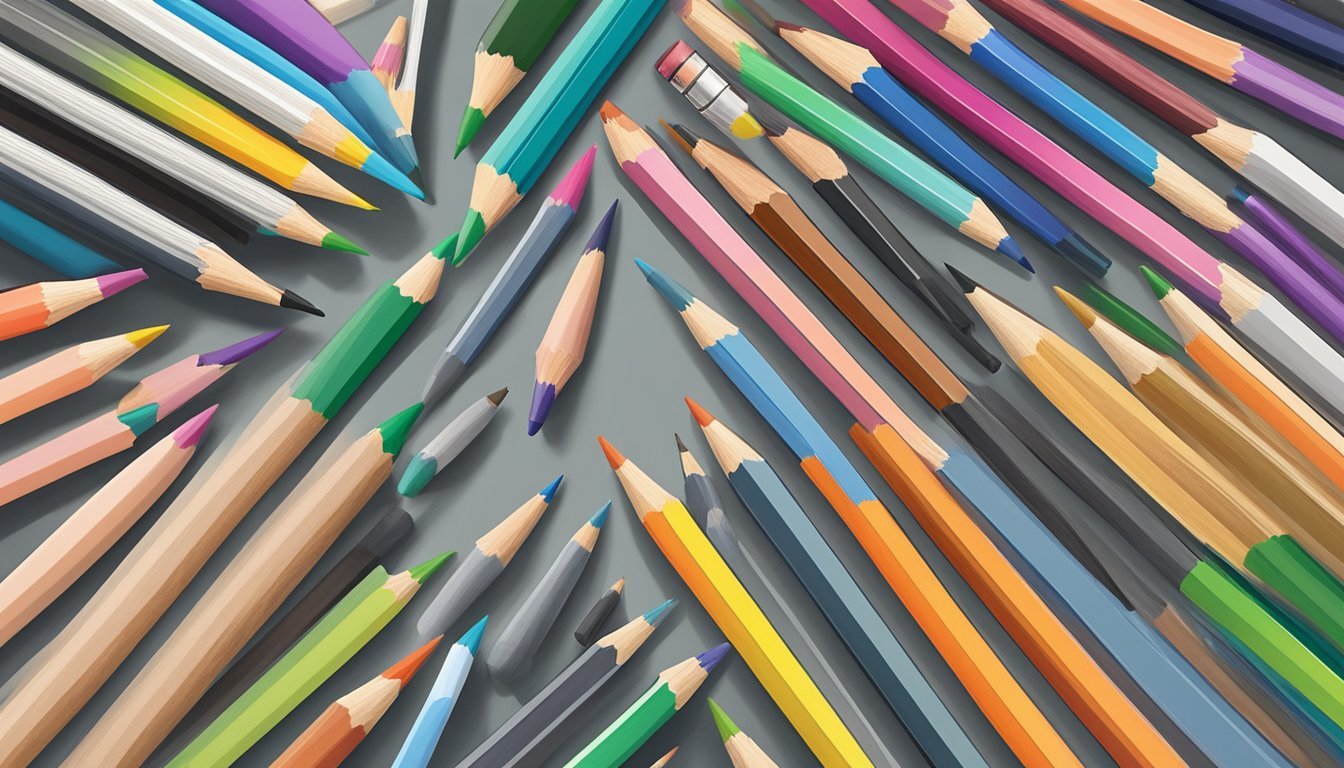
Prismacolor Premier Colored Pencils are a favorite among many artists, especially beginners.
They come with a creamy, soft core that makes laying down color feel smooth and effortless.
These pencils are known for their blending capabilities.
You can easily mix and layer colors to achieve the depth and richness you want in your artwork.
In fact, many artists appreciate the vibrant, saturated colors these pencils provide.
The round, slim barrel makes them comfortable to hold during long drawing sessions.
Plus, they sharpen well, so you can maintain a fine tip for detailed work.
Whether you’re sketching or adding color to your illustrations, Prismacolor Premier Colored Pencils can elevate your art projects.
They’re a solid choice for anyone looking to enhance their artistic journey.
3) Faber-Castell Pitt Artist Pens
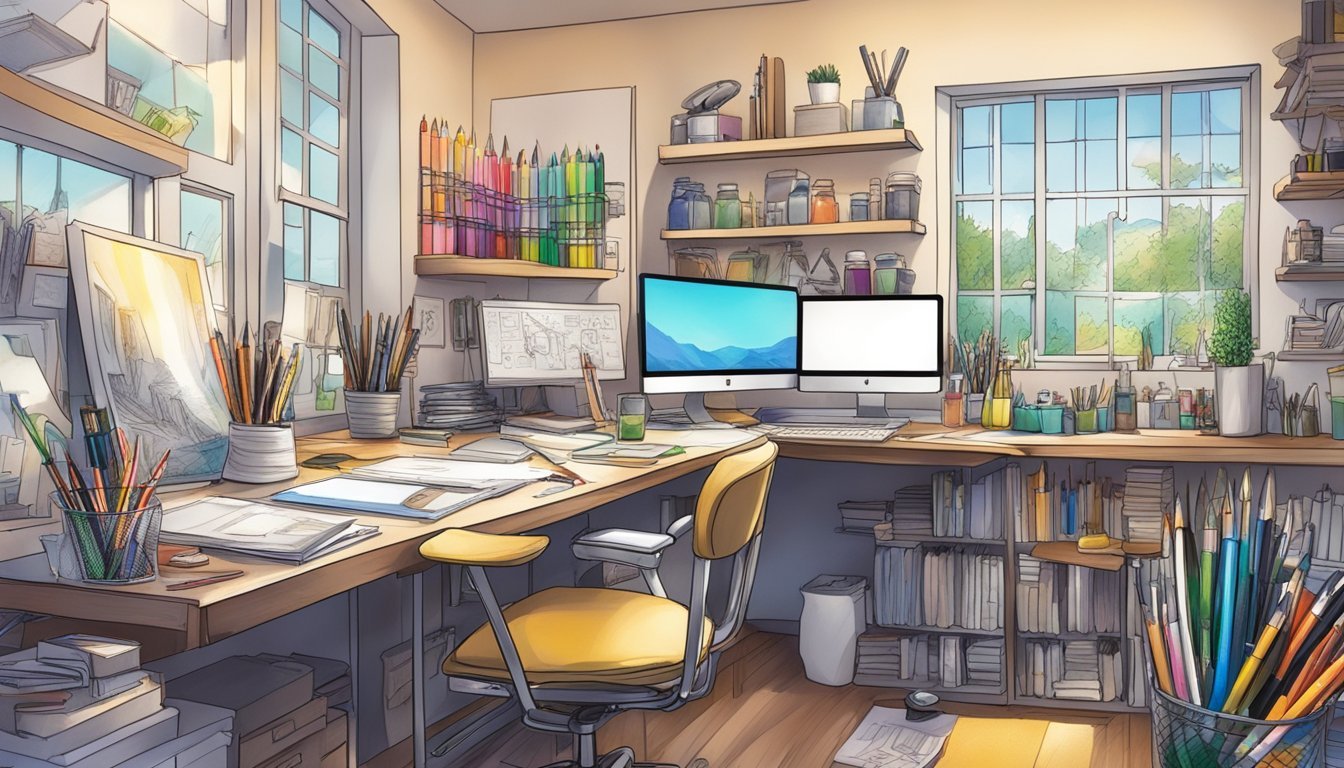
Faber-Castell Pitt Artist Pens are a fantastic addition to any art studio.
They come in a variety of nib sizes, so you can choose the one that fits your drawing style.
Whether you prefer fine lines or broader strokes, these pens have you covered.
These pens use 100% pigmented India ink.
This means they’re lightfast, permanent, and perfect for archival quality work.
You don’t have to worry about them fading over time.
The ink is also non-toxic and odorless, making them safe for long sessions of creative work.
Plus, they’re smudge-proof, so your artwork will look clean and professional.
You can use them on different surfaces, including paper and canvas.
They perform well in various techniques, from hatching to cross-hatching, so your creative options are endless.
For those looking to add a touch of metallic flair, Faber-Castell offers metallic versions too.
These add a shimmering effect that stands out on both light and dark backgrounds.
4) Moleskine Art Sketchbook
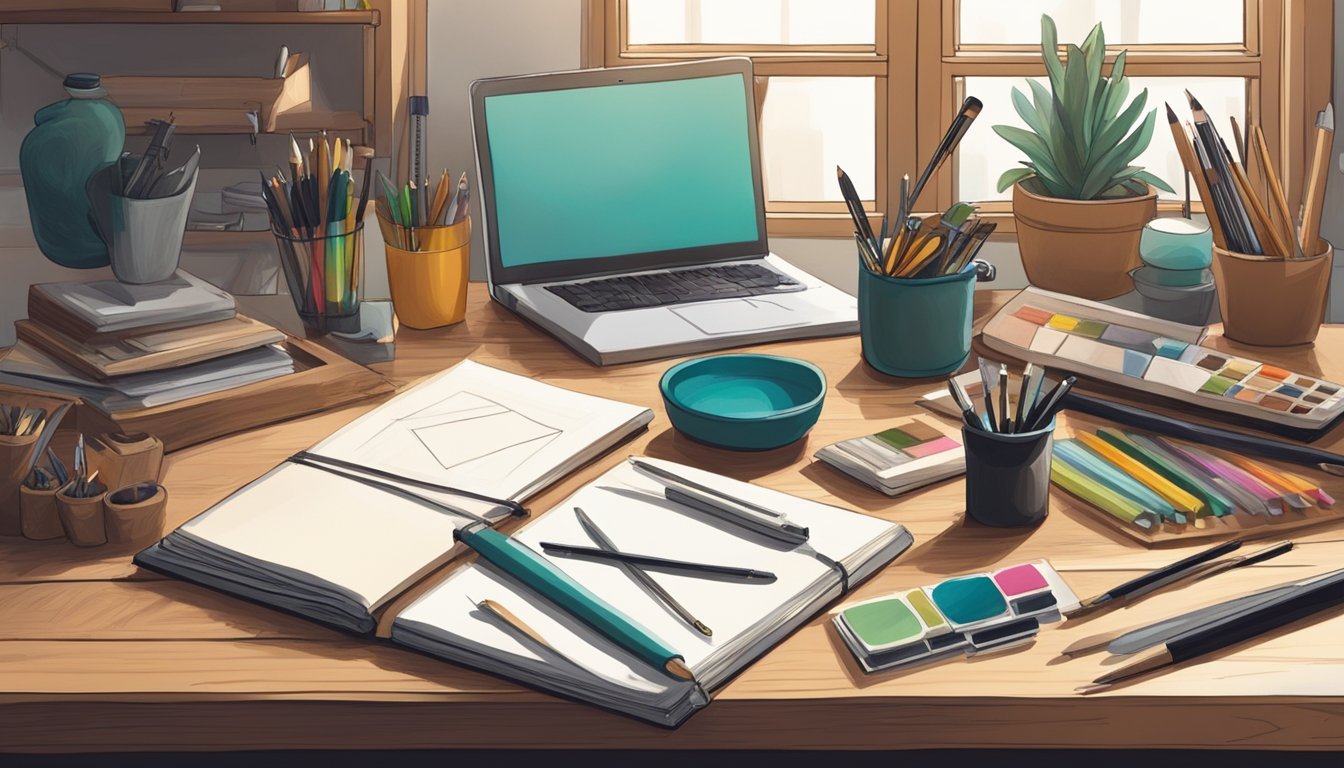
The Moleskine Art Sketchbook is a fantastic choice for beginners.
It’s known for its classic style and durability, making it a reliable companion for your creative journey.
This sketchbook features quality sketch-grade paper, which is designed to handle various media.
Whether you’re using pencils, ink, or light watercolors, the pages hold up well.
The size of the Moleskine Art Sketchbook makes it portable, perfect for sketching on the go.
You can easily slip it into your bag and take it anywhere.
With its rounded corners and a solid cover, it not only looks great but also protects your artwork.
Plus, the built-in elastic closure helps keep your sketches secure.
If you prefer to add color to your sketches, consider using a lighter marker to prevent bleed-through.
It’s a smart choice for keeping your art vibrant and fresh.
Overall, the Moleskine Art Sketchbook combines functionality and style, making it an essential upgrade for your art studio.
5) Liquitex Basics Acrylic Paint Set

When you’re starting out, a solid paint set can make a big difference.
The Liquitex Basics Acrylic Paint Set is a great choice for beginners.
It offers a nice range of colors that are versatile for various projects.
This set typically includes about 24 to 72 colors in 22 ml tubes.
The paint is known for its smooth consistency and good coverage.
You’ll find that it dries quickly, which is perfect for layering.
Also, the colors are made with lightfast pigments, meaning they won’t fade easily over time.
This is essential if you want your artwork to last.
You can use these paints on different surfaces, from canvas to wood and even fabric.
Plus, the affordability of the Liquitex Basics line means you won’t break the bank as you explore your creative side.
With this set, you’ll have the freedom to experiment without feeling overwhelmed.
It’s a reliable starting point that many artists keep coming back to.
6) Strathmore 400 Series Watercolor Paper
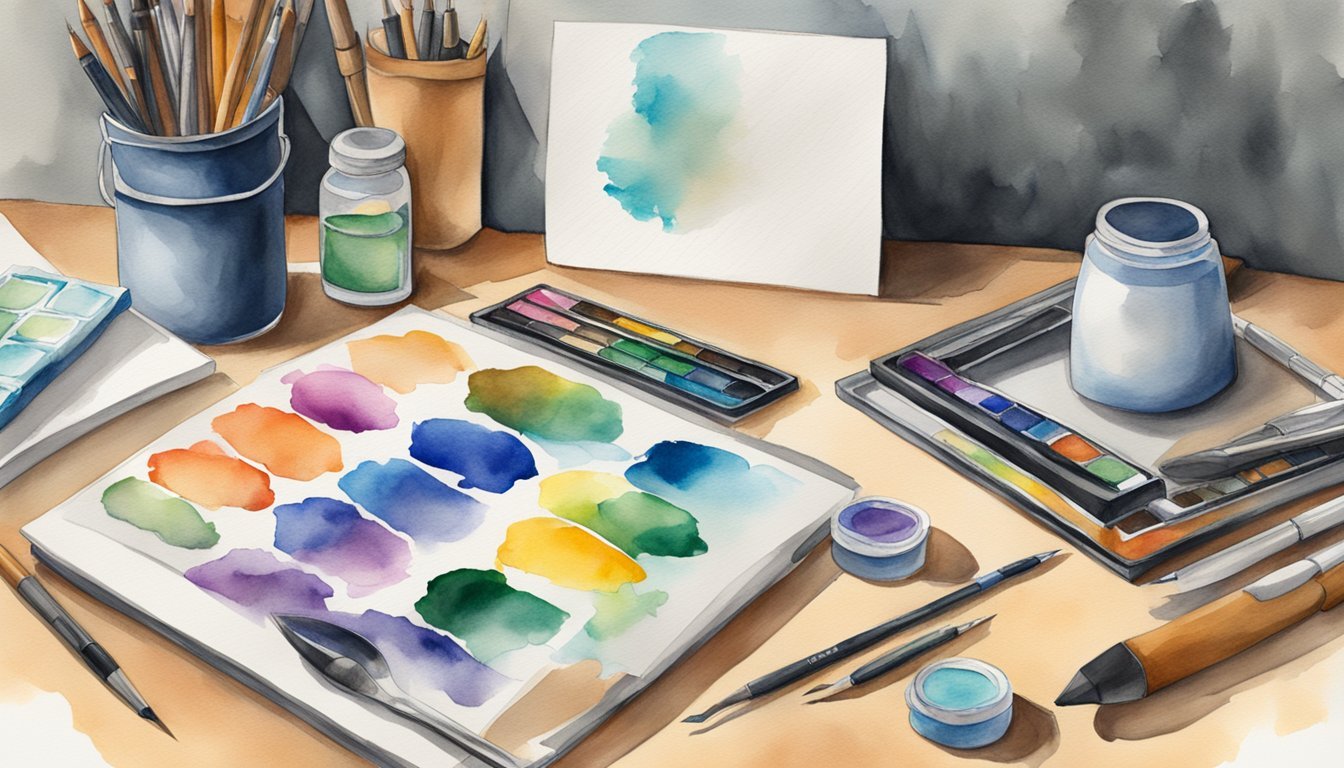
Strathmore 400 Series Watercolor Paper is a solid choice for your art studio.
With a weight of 140 lb and a cold press surface, it handles watercolors well.
This paper is great for artists at all skill levels.
You can achieve fine washes and enjoy the strong surface that allows for techniques like lifting and scraping.
It’s versatile—ideal for various mediums, making it a reliable option for your creative projects.
Whether you’re practicing or creating finished pieces, this paper supports your artistic journey.
With Strathmore’s reputation for quality, you can trust that you’re working with materials designed for durability and performance.
Consider adding this paper to your supplies if you want a dependable partner for your watercolor work.
7) Daylight Tabletop Craft Lamp
A Daylight tabletop craft lamp can be a game-changer for your art studio.
It provides bright, natural light that helps you see colors more accurately.
Look for a lamp with a high color rendering index (CRI) of 90 or above.
This ensures that the colors you work with appear true to life, which is especially helpful when mixing paints or choosing materials.
These lamps often come with adjustable brightness levels and color temperatures.
This allows you to customize the lighting according to your task, whether you’re painting, sewing, or drawing.
Portability is another advantage.
Most tabletop craft lamps are lightweight and easy to position exactly where you need them.
Consider a model that includes an anti-glare diffuser.
This feature minimizes eye strain during long sessions.
With a stylish design, a Daylight lamp can enhance the look of your studio while elevating your creative experience.
Investing in one can make a noticeable difference in your artwork.
Understanding Your Space
Creating a functional art studio begins with a clear understanding of your available space.
Whether you’re working in a small corner or a larger room, optimizing every inch is crucial.
Additionally, how you organize your tools and materials can significantly enhance your workflow and creativity.
Maximizing Available Space
When considering your art studio, think about how to use vertical space effectively.
Wall-mounted shelves can hold supplies without taking up floor space.
Pegboards are great for hanging tools, keeping them accessible and visible.
Tip: Use clear bins or jars to store smaller items.
Label each container for easy identification.
If you face space constraints, consider multi-functional furniture.
A folding table can serve as both a workspace and a storage unit when not in use.
Finally, assess natural light options.
Position your setup near windows to maximize light exposure, enhancing your creativity and reducing eye strain.
Organizing Tools and Materials
A well-organized studio is essential for a smooth creative process.
Start by categorizing your supplies: paints, brushes, canvases, and miscellaneous materials.
Recommended Organization Methods:
- Shelving Units: Place larger items on shelves, keeping frequently used materials within arm’s reach.
- Storage Carts: Moveable carts can help you keep your workspace tidy while allowing easy access to materials.
Consider using clear containers for easy visibility.
This approach saves you time searching for supplies and minimizes clutter.
Regularly declutter your space, removing items you no longer use.
This keeps the environment fresh and focused on your art.
Choosing the Right Lighting
Lighting in your art studio is crucial for creating a comfortable and effective workspace.
It helps you see colors accurately and reduces eye strain.
Here’s how to navigate your options.
Comparing Natural vs. Artificial Lighting
Natural light is ideal for artists.
It provides a full spectrum of colors and enhances your ability to see subtle differences in hues.
North-facing windows are particularly beneficial, as they provide consistent light throughout the day.
Pros of Natural Light:
- Enhances color perception.
- Reduces harsh shadows.
On the flip side, artificial lighting serves as a reliable backup or alternative.
When selecting bulbs, aim for a color temperature (CCT) around 5500 K to replicate midday sun.
For a cooler effect, choose bulbs rated at 7500 K.
Key Tip: Always use lights with a high Color Rendering Index (CRI).
Aim for at least 80; 95+ is ideal to reveal vibrant colors.
Cost-Effective Light Setup Ideas
Setting up your lighting doesn’t need to break the bank.
Start with a mix of natural and affordable artificial lights.
Here are some budget-friendly ideas:
-
LED Bulbs: Energy-efficient and long-lasting, these come in various color temperatures. Look for bulbs with high CRI ratings.
-
Clip-On Lights: You can position them at angles to minimize shadows. They’re easy to reposition based on your workspace needs.
-
DIY Diffusers: Use sheer curtains or plastic sheets to soften harsh light and spread it evenly across your workspace.


